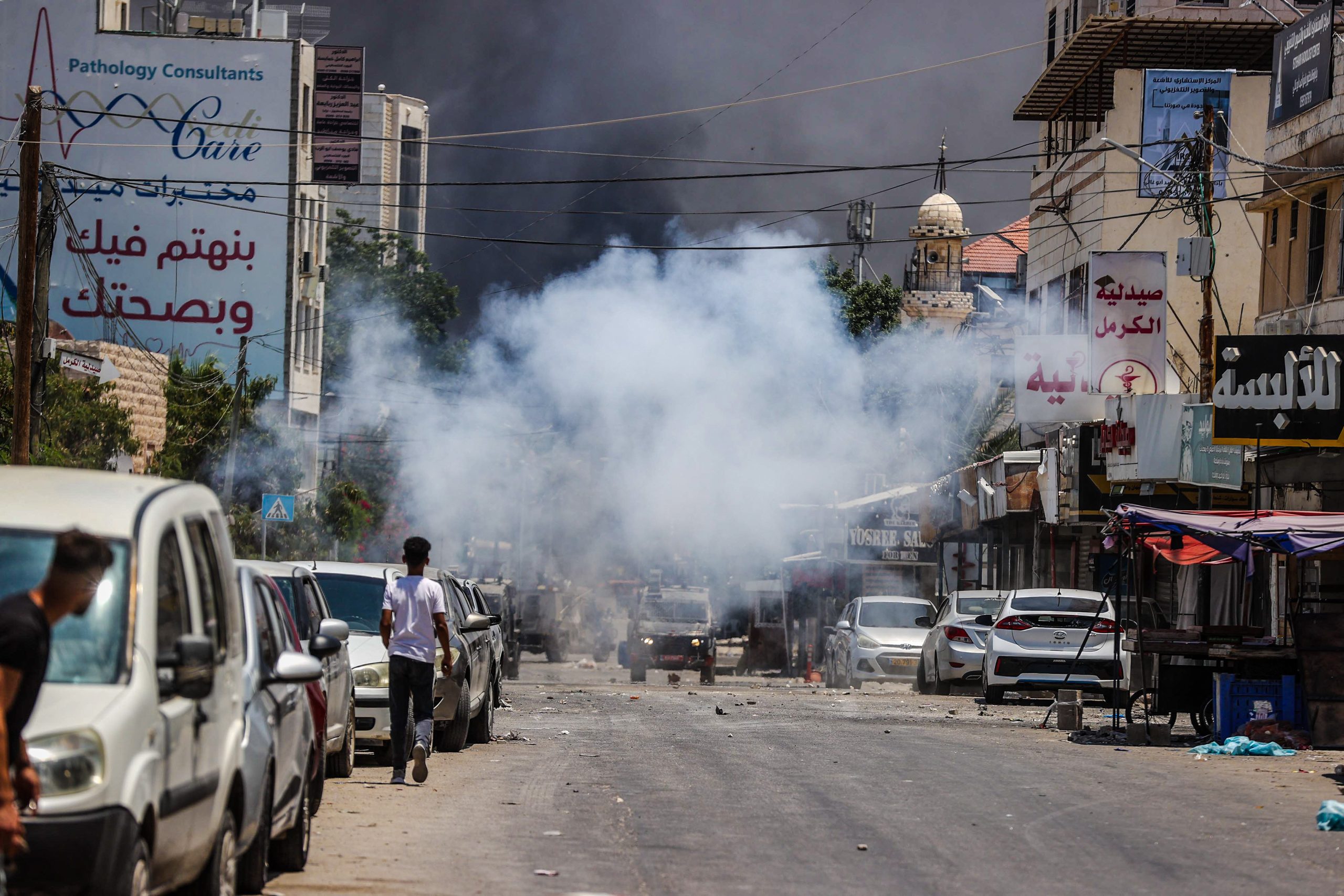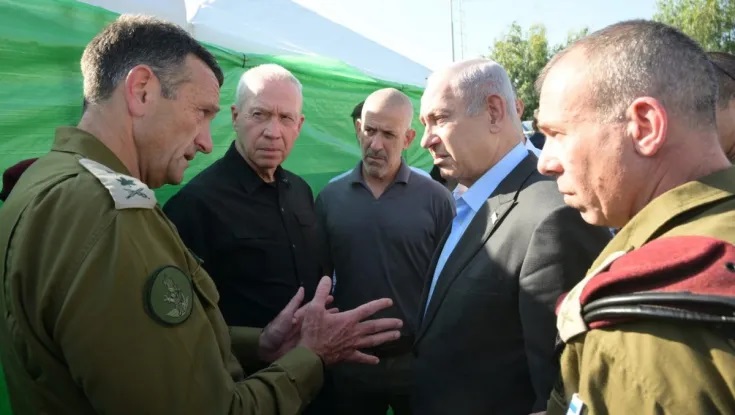Publications
INSS Insight | No. 1744 | July 16, 2023
Operation Home and Garden was declared an operational success, but its effects will wear off quickly unless there is a change in the overall situation, especially regarding the balance of power in the northern West Bank. Therefore, what is needed is a complementary political move to realize the potential of cooperation between Israel and the Palestinian Authority and to create the conditions that will allow and encourage the PA to return to Jenin – primarily as an entity capable of reconstruction following the IDF operation. At the same time, the Palestinian Authority must be influenced, mainly by the United States and Jordan, to redeploy Palestinian security apparatuses the area. The alternative to the PA returning to the northern West Bank is for the IDF to take control and manage the theater, which means that responsibility for the Palestinian population would fall on Israel’s shoulders. That would represent a significant stage in the acceleration of Israel’s slide toward a one-state reality.
The objective of Operation Home and Garden, the recent two-day IDF operation in Jenin, was to address both the security deterioration and the Palestinian Authority’s loss of control in the northern West Bank. Israel’s recourse to greater force resulted from a convergence of challenges and trends:
- The counter-terror activity by the IDF and the Israel Security Agency in the northern West Bank – Operation Break the Wave – ran its course and led to a self-perpetuating cycle of violence: the more the IDF intensified its operations against terrorists and killed or injured a large number of armed operatives, the more young Palestinians were motivated to join the fighting against the IDF and attack Israeli settlements, soldiers, and civilians.
- The lack of a political horizon is compounded by the perception that the Israeli government’s moves are accelerated steps toward annexation. In the past few months, Israel has issued a record number of construction permits in the settlements, and in practice, authorized violations of the law, as seen in the return to Homesh and Evyatar and the establishment of at least 10 new unauthorized outposts. Apart from the fact that these developments create new points of friction, they quash any remaining hopes among the Palestinians of ending the occupation and realizing their national aspirations.
- The Palestinian Authority has lost control of the northern West Bank, and the Palestinian security apparatuses are not motivated to confront the terrorist groups that have seized control of Jenin and its environs. Political coordination with Israel is limited, and it has become increasingly problematic to implement security coordination, which in the past helped prevent uncontrolled deterioration. In the current atmosphere of settlement expansion and settler violence toward Palestinians, the Palestinian security apparatuses have no intention of operating against armed groups in Jenin and Nablus and/or assisting in disarming them.
- The IDF no longer has control over part of the settler population in the northern West Bank, who have increased and intensified their revenge attacks against Palestinians in the aftermath of terror attacks against Israelis – and even earn political support from radical government ministers who encourage them to take the law into their own hands.
- Jenin has become the terror center of the northern West Bank. Weapons and ammunition in the city’s refugee camp are more widespread, and there are also facilities for manufacturing explosives. Cooperation has increased between the various factions, led by Islamic Jihad and Hamas, as has cooperation between them and Fatah’s Tanzim operatives (al-Aqsa Martyrs' Brigades). The factions have even set up a coordination mechanism, including a situation room and a warning system. Behind the scenes, Iran supports terrorist activity, assisting in the transfer of funds to activists and the smuggling of arms over the Syrian and Jordanian borders.
- The United States administration no longer has the leverage it once had to restrain the Israeli government regarding its settlement policy, which is designed to prevent any kind of future political agreement based on a two-state solution. The tension between the US and Israel has increased with the Israeli security forces’ inability to address settler violence against Palestinians. (Moreover, the US is worried about the possible ramifications of the judicial overhaul that the government is advancing, which has sparked widespread public protest. Relations between Washington and Jerusalem, therefore, are weathering an extremely tense period, which means, inter alia, that Israel’s international legitimacy is undermined.)
For these reasons, and against the backdrop of increased pressure from the settlement population and their representatives in the government to launch an extensive military campaign, the IDF launched a focused operation against the terror infrastructure in the Jenin refugee camp. The goals of the operation were to dismantle the terrorist infrastructure in the camp; kill terrorists and arrest those involved in terror; and lay the groundwork for a prolonged campaign against terrorism in the area. The hope was to control the escalation and prevent incidents from spreading to other parts of the West Bank or elsewhere.

By the end of the operation, a sense of operational success prevailed in Israel, given the following achievements: 12 terrorists were killed; 300 terror suspects were interrogated, of whom 30 were arrested; 6 facilities for the manufacture of explosives and explosive devices were destroyed; 14 apartments used for terrorist activity and as control rooms were identified and destroyed; 300 ready-to-use explosive devices were neutralized; dozens of mines, rifles, and pistols were captured, along with hundreds of bullets and dozens of kilograms of chemicals used to make explosives; 6 tunnel entrances were identified and destroyed, as were 2 weapons storehouses. Most of the terror activists fled the Jenin refugee camp, once they realized that Israeli forces had entered the camp. Others escaped while taking advantage of the families who, fearing for their lives, fled the camp.
Following the operation, international criticism of Israel increased. The United Nations Office for the Coordination of Humanitarian Affairs (OCHA) in the Occupied Palestinian Territories stated that 300 housing units in Jenin had been damaged and that some were no longer fit for human habitation. More than 500 Palestinian families, including over 3,500 women and children, were displaced because of damage to their homes. Widescale damage was also reported to the electricity, water, and sewage systems in the camp itself and the surrounding neighborhoods.
Implications
Alongside the operational success, several questions arise: How can the achievements be maintained? Is it possible to isolate Jenin from the rest of the West Bank? Is there a viable plan to allow the Palestinian Authority’s security apparatuses to regain control of Jenin? How can the gaps in the Israeli political system be bridged, specifically between the security establishment, which sees great importance to strengthening the performance of the Palestinian Authority, and those members of the government who seek to topple the PA? What complementary political move can the Israeli government make that would reinforce the military achievement?
Following the operation, and especially after Fatah Vice Chairman Mahmoud al-Aloul and PLO Executive Committee member Azzam al-Ahmed were unceremoniously ejected from a funeral procession in Jenin, and given the rejection by Hamas and Islamic Jihad of a call by Mahmoud Abbas to hold an inter-faction summit, the PA President recognized that he should reevaluate his policies in the northern West Bank. A prevalent criticism of the Palestinian Authority is that it does not function as expected of a governmental authority and does not protect the Palestinian people from settler violence. In an attempt to show a presence on the ground, the PA organized armed marches by members of Fatah’s Tanzim wing in a number of towns and villages, and also brokered a sulha (an internal rapprochement) between organization leaders and activists affiliated with the al-Aqsa Martyrs Brigades in Jenin. This, however, does not go far enough to address the criticism of the PA’s dysfunction and its lack of control. Indeed, leaked details of an internal discussion in Ramallah revealed that Palestinian officials are concerned that if their security apparatuses do not act quickly, Hamas could take control of Jenin – just as it took control of the Gaza Strip in 2007. It was decided, therefore, that the Palestinian Authority would repair the damage caused by the Israeli operation, to prove its commitment to and activity on behalf of the Palestinian people, and to utilize the aid money for reconstruction that was promised by the United Arab Emirates ($15 million, albeit via UNRWA) and Algeria ($30 million). On July 12, 2023, Palestinian President Mahmoud Abbas visited Jenin (the last time was 11 years ago) and announced, “We are one authority, one state, one law, one security, and one stability”.
For its part, Hamas emerged unscathed from the brief escalation in Jenin, without having to pay a price for encouraging and fueling terrorist activity in the West Bank. It too, however, has been criticized for not standing up to the IDF and for safeguarding what it has accomplished in the Gaza Strip – reconstruction, economic growth, and employment inside Israel. By taking responsibility for the terror attacks carried out in the immediate aftermath of the Jenin operation, Hamas was apparently trying to strengthen its image as the leader of the Palestinian resistance movement – necessarily at the expense of the Palestinian Authority and Fatah.
Recommendations
Despite their common interest in preventing Hamas and Islamic Jihad from taking control of the Jenin area (and, at the same time, neutralizing the Iranian influence in the arena), both Israel and the Palestinian Authority are wary of any attempts at cooperation. Therefore, Israel should create the conditions that allow and encourage the PA to return to Jenin, first and foremost as the entity responsible for reconstruction following the recent military operation. At the same time, Israel should leverage its influence over the Palestinian Authority, especially through the United States and Jordan, to redeploy its security apparatuses in the area, while increasing their numbers and providing them with better equipment, in accordance with the plan outlined by the US security coordinator.
Israel should also enable the Palestinian Authority’s regained control of the northern West Bank by advancing economic projects and establishing training and employment centers for Palestinian youths. In order to ensure that financial aid is raised and channeled to essential projects, it is important to establish an international supervisory mechanism, perhaps comprising representatives of the donor states – to ensure that the money given to the PA is indeed invested in infrastructure and employment projects in the Jenin area.
If from the outset Israel rejects an initiative for the Palestinian Authority to regain control in Jenin, it will not be long before it will once again have to launch an operation against Hamas, Islamic Jihad, and the al-Aqsa Martyrs Brigades in the area. Indeed, on July 9, 2023, the Israeli government took the correct decision to bolster the Palestinian Authority, but at the same time, imposed a number of conditions that Ramallah will find hard to meet, including ending the financial support that it provides to families of terrorists killed or arrested by Israel, and refraining from confronting Israel in international forums.
The alternative to the Palestinian Authority returning to Jenin is for the IDF to take control of the area and run it like an independent canton, which means that responsibility for the Palestinian population there would fall on Israel’s shoulders. That would represent a significant acceleration of Israel’s slide into a one-state reality.



